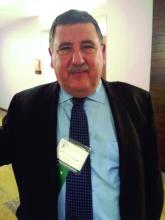A force for change
The work GAP produces has had a substantial impact on the field of psychiatry and society in general over the past 7 and a half decades. Consider this list of just a handful of GAP contributions in its first decade.
- Guidance regarding electroconvulsive therapy in 1947, followed by an update, in response to reaction to the first document, in 1950.
- A guide to school integration after Brown v. Board of Education that considered the psychiatric challenges of integration.
- A report for employers on workers with epilepsy for occupational health and safety.
- Publications that raised mental hospital standards in the 1950s.
- A range of action documents used by medical schools, psychology and social work departments and agencies, governmental bodies, courts, industry, public schools, and community health and welfare agencies.
Over the years, GAP’s influence has sometimes been overt – such as publishing the only diagnostic and statistical manual for child psychiatry for years before that material was incorporated into the official DSM. Sometimes it’s just ahead of the curve, such as the women’s mental health committee publishing a paper that reviewed the evidence on “abortion trauma syndrome” and concluding that it doesn’t exist shortly before the American Psychological Association and the U.K.’s Royal College of Psychiatrists published reviews with similar conclusions. In a few instances, GAP has caused shifts in how the APA operates, such as encouraging the larger organization to publish books on mental health, said Dr. Sharfstein, a past president of the APA.
Much of the organization’s impact occurs through its effects on education, which affects clinical psychiatry at large.“Some reports are very much designed to have an impact on psychiatry education, residency training and curriculum development, which would have a big impact on practice,” Dr. Sharfstein said. An example is the committee on disasters, which examines the best ways for mental health professionals to respond to and mitigate the mental health fallout from the consequences of natural and manmade disasters.
Most often, though, GAP’s influence is akin to strategically planting very carefully cultivated seeds throughout the academic and clinical media ecosystems and letting them bloom how they will. For example, Dr. Lewis-Fernández described a project the cultural committee published in 2013: a checklist for how a psychiatry research article should address topics related to race, ethnicity, and culture. After reviewing articles in the field and their methodologies, the group developed a checklist of best practices and tested them with articles in the field to see how the checklist held up before publishing it.
“Initially, some people read it, some people didn’t, but over time, it’s gotten picked up, and it’s now about to be used in a journal on psychiatric services as a guide to authors and reviews on the appropriate use of these concepts,” Dr. Lewis-Fernández said.
GAP’s influence also blooms through the cross-pollination that occurs at meetings, where leaders in psychiatry from all across the country come together, discuss ideas, and then take new ideas back to their universities, where they teach them to their residents. Perhaps the best example of this influence in recent years has been a increasing shift in teaching about LGBTQ+ issues.
“There’s an underrepresentation of teaching about LGBTQ+ issues in many psychiatric training programs in many medical schools,” Dr. Drescher said. The organization has worked to raise awareness about these gaps in the education of medical students and mental health professionals and then address it, such as designing an online module curriculum in the early 2000s for how to teach residents about LGBTQ+ mental health issues and then updating it as needed.
Perhaps GAP’s greatest lifetime achievement is forcing the field of psychiatry to confront the fact that it – and its patients – do not stand apart from the society in which they exist.
“People aren’t just psychiatric disorders. They live in society, and society has an impact on them, and that affects how people cope,” Dr. Robinson said. That was once a radical concept, but now “psychiatry as a whole has moved to be more broadly expansive” just as GAP itself has broadened its scope, as evidenced by the wide range of committees, more than triple what the organization had at its founding. “GAP was really at the vanguard of that expansion into the recognizing the need to consider the interaction between the individual and the environment they live in socially.”
That’s never been more true than during the COVID-19 pandemic, contributing to perhaps the greatest mental health crisis in the nation’s history since World War II. But the pandemic hasn’t slowed down GAP’s work. In fact, in some ways, the pandemic has facilitated the group’s ability to meet more often virtually and focus on acute issues the pandemic itself has caused. The psychopathology committee published one paper on the impact of telehealth on treating the chronic mentally ill during COVID, and another delved into rethinking where things stand with institutional racism within psychiatry. The women’s mental health committee published articles on the impact of COVID on pregnant and postpartum women, and the impact of COVID on minority women.


